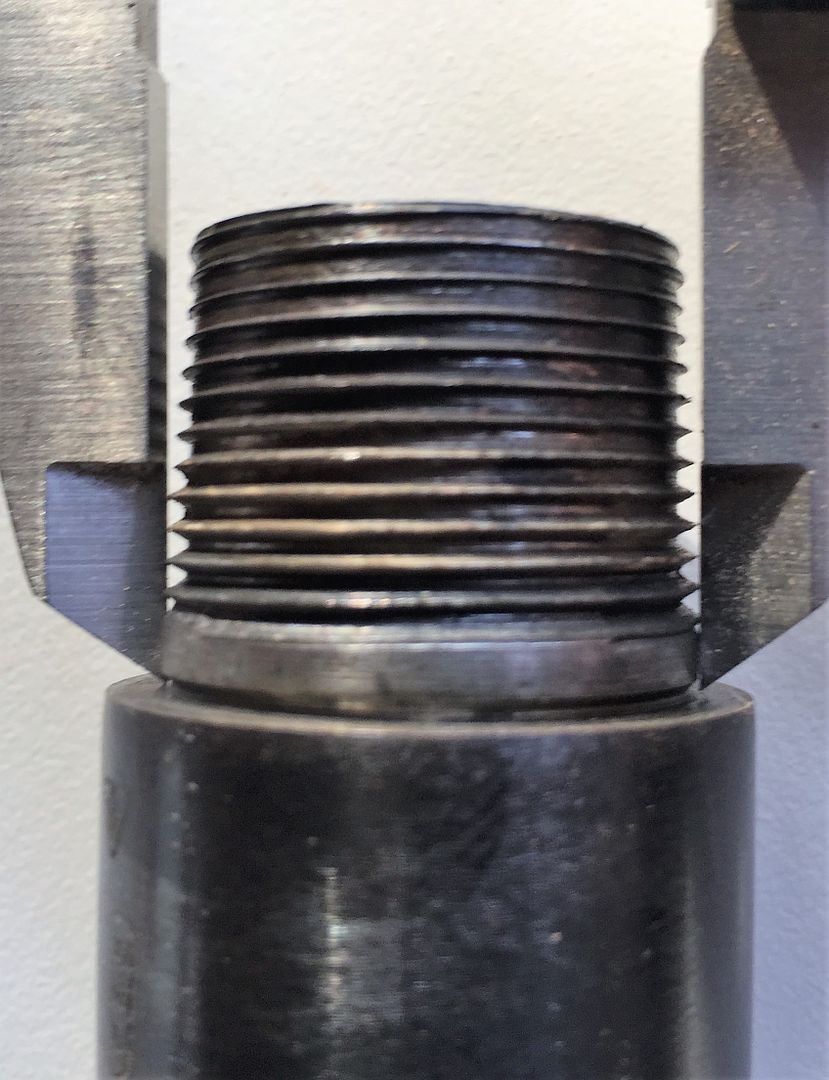Currently rebarreling an old Blued Rem 700 308 Target/Tactical for a client, pulled the factory barrel off & found this....

When going into the receiver "loose" doesn't even begin to describe the first 3/4's of the thread
It has been abused & had a besquillion rounds through it.
Used to shoot fantastically, easily 1/2 moa & better right out there with barely 1/4" of thread holding it into the receiver....

When going into the receiver "loose" doesn't even begin to describe the first 3/4's of the thread
It has been abused & had a besquillion rounds through it.
Used to shoot fantastically, easily 1/2 moa & better right out there with barely 1/4" of thread holding it into the receiver....

